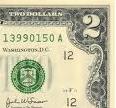With our weekly deadline, we’re all about the countdowns here. So we’d like to think we’re rather well-rehearsed for the biggest deadline of the year: midnight on December 31.
While it’s an exciting time no matter where you are, the most famous of New Year’s Eve parties is, of course, in the Big Apple. And if you’re among the estimated billion worldwide watchers (not to mention the approximately one million folks live in Times Square), you already know you’re part of one of the most exciting annual traditions. But here are some pretty neat factoids you might not already know about that famous glittery ball and its yearly voyage:
- The inaugural drop was in 1907 and the first ball to be lowered was made of wood, iron and one hundred 25-watt light bulbs. It was 5 feet in diameter and weighed in at 700 pounds!
- The ball has dropped every year since with only two exceptions: blackout restrictions due to World War II prevented it happening in 1942 & 1943
- There have been a number of different balls used throughout the years, but a fifth ball design, lit by LED, was introduced for the celebration’s centennial in 2007.
- The current ball design – the sixth – was introduced in 2009. It clocks in at 11,875 pounds and has a diameter of 12 feet. It’s made up of 2,688 Waterford crystal panels.
- In over a century of celebrating, there have only been 7 white New Years Eves – the most recent snowy celebration was in 2009.









